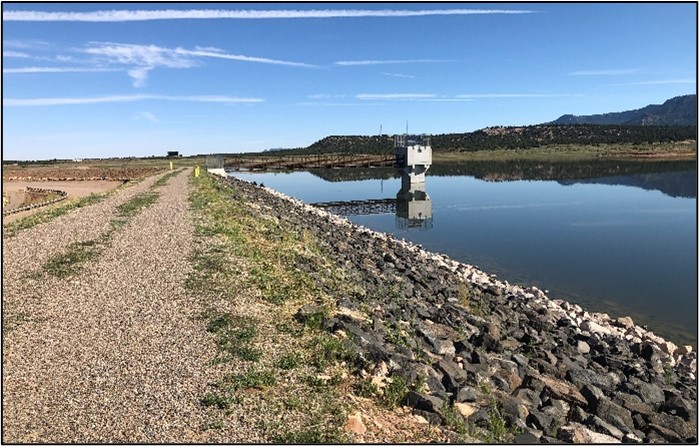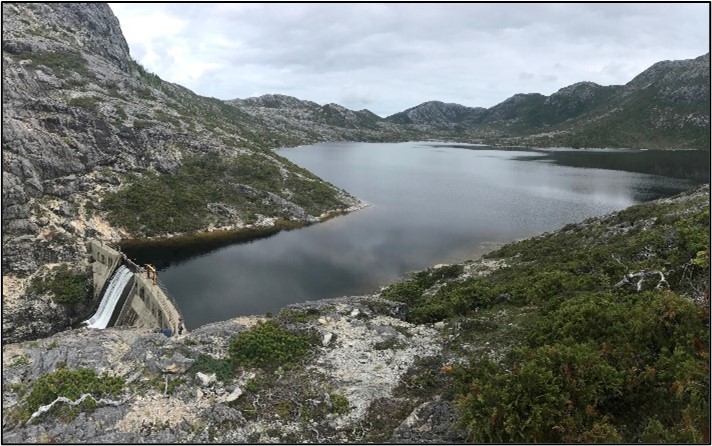The Bureau of Indian Affairs (BIA) Branch of Safety of Dams (SOD) administers routine dam safety activities to its portfolio of dams across Indian Country.
All dam safety activities are part of SOD’s risk-informed decision-making process. Regular risk assessments for the SOD portfolio of dams evaluate dam safety issues, analyze the likelihood of dam incidents, and assess the consequences of dam incidents. SOD uses these factors to prioritize dam safety activities and make safety investments in its portfolio of dams.
The goal of risk-informed decision making in administering dam safety activities is to protect the lives and property of downstream residents by reducing the likelihood of dam failure throughout Indian Country.
Portfolio of Dams Eligibility
Dams are included in the SOD portfolio of dams based on two eligibility factors:
- The dam must be located on Indian land (including both trust land and restricted fee land).
- Low-hazard potential dams that are
- 25 or more in height from the natural bed of the stream channel or watercourse measured at the downstream toe of the barrier or,
- if the barrier is not across a stream channel or watercourse, from the lowest elevation of the outside limit of the barrier to the maximum storage elevation; or
- Has a storage capacity of 50 acre-feet or greater at the reservoir maximum water surface elevation
Full eligibility information is included in 55 IAM-H: Safety of Dams Program Handbook
Inspections and Evaluations
Ongoing, periodic dam inspections are critical to determine the condition and safety of dams. SOD performs annual inspections of its portfolio of dams to identify deficiencies related to dam safety, public safety, security and operations.
Dam evaluations provide the necessary risk assessments to enable risk-informed decision making. SOD performs both periodic reviews and lengthier, multidisciplinary comprehensive reviews of dams on a regular schedule determined by the dam’s previously assessed hazard potential.

Emergency Management
Emergency management for the SOD portfolio of dams involves prevention and mitigation, emergency preparedness, emergency response, and post-incident recovery for dams.
The primary focus of SOD’s emergency management is creating Emergency Action Plans (EAPs) to help save lives and minimize property damage. EAPs are formal documents that prepare Tribes and emergency responders to take action to respond to a dam emergency. EAPs guide responsible officials to detect problems, mitigate and respond to incidents, coordinate with emergency responders and issue warnings to affected members of the public.
EAPs must be prepared according to the Federal Emergency Management Agency’s Federal Guidelines for Dam Safety. All high-hazard and significant-hazard dams in the SOD portfolio are required to have an EAP.

Early Warning Systems
Early Warning Systems (EWSs) provide near-real-time remote monitoring of reservoir levels, stream levels, and rainfall at dam sites to supplement onsite observations and reduce the risk and impact of dam incidents. The BIA, with the assistance of Tribes, has installed EWSs for most high- and significant-hazard potential dams.
Data from EWSs are connected to the BIA’s National Monitoring Center (NMC), operated by the Confederated Salish and Kootenai Tribes on the Flathead Indian Reservation. For specified EWS alarms, National Monitoring Center staff make phone calls to designated dam contacts to ensure that alarm messages have been received. The National Monitoring Center is staffed 24 hours a day, 7 days a week.
Maintenance and Repair
SOD performs routine maintenance on its portfolio of dams to keep them from deteriorating into an unsafe condition. Typical dam maintenance includes control of vegetation and rodents, repair of erosion damage or cracked concrete, lubrication of gates and valves, and repair of fences and locks.
For high-hazard potential dams in the SOD portfolio of dams, one-time repairs may be performed to keep the facility operational.
Additional Information
Additional Resources
Contact Us
Lakewood, CO 80401


